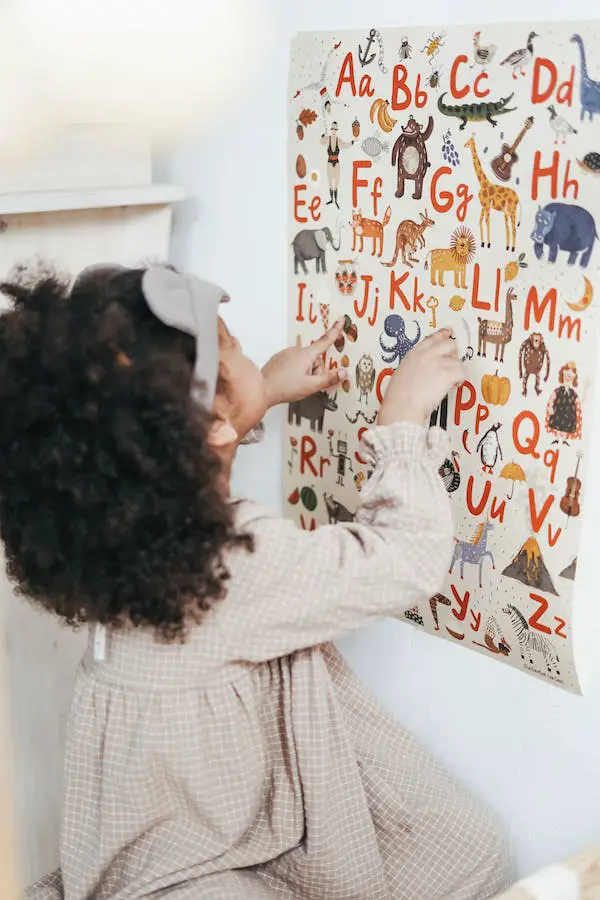
Hello, dear fellow enthusiasts of the human experience!
As we embark on our exploration of the marvels of the human body, one captivating domain takes center stage – the realm of motor behavior.
In this article, we’ll take a captivating journey through the intricate world of motor behavior, unveiling its essence, significance, and its profound influence on our day-to-day activities.
So, prepare for an enlightening adventure and join us in unraveling the driving force behind our every move.
What is Motor Behavior?
To kick things off, let’s delve into the essence of motor behavior.
It’s akin to the conductor orchestrating the symphony of movements that our bodies gracefully perform day in and day out.
This term encompasses the entire spectrum of actions we undertake, from the simplest, heartwarming wave hello, to the awe-inspiring dance moves that grace the stage, and even the impeccable precision that skilled surgeons employ in the life-or-death scenarios of the operating room.
Motor behavior takes on the role of the uncelebrated director behind the scenes, enabling and coordinating our physical activities, and it’s a captivating and indispensable facet of our daily existence.
- Read also: Understanding Self-Soothing Behaviors in Adults
- Read also: Withdrawn Behavior in Adults
Why is Motor Behavior Important?
Let’s delve into why motor behavior holds such paramount significance in our lives.
It’s far from a mere bodily function; it’s the very essence of our existence.
Everyday functionality
Motor behavior is the linchpin that empowers us to perform the most seemingly mundane yet profoundly essential tasks in our day-to-day lives.
It’s what allows us to effortlessly wield a fork to nourish ourselves, to traverse from one place to another on our own two feet, and to transcribe our thoughts onto paper with grace.
It serves as the solid foundation of our functional independence, granting us the agility to navigate the world around us.
Communication
Consider the way we engage in conversations, convey our thoughts, and comprehend the expressions of others.
Our ability to communicate effectively, whether through spoken language, written words, or the subtle language of non-verbal cues, rests squarely on the foundation of motor behavior.
It’s the intricate coordination of our lips, tongue, and vocal cords as we speak, or the seamless flow of our hands as we put pen to paper, all thanks to this intricate and vital process.
Learning and education
In the realm of education, motor behavior plays a pivotal role.
It’s the reason we can hold a pencil and learn to write, grasp musical instruments to create beautiful melodies, or even engage in physical activities like sports.
It’s through motor behavior that we can absorb, process, and demonstrate our knowledge and skills.
Independence and quality of life
The ability to perform basic self-care tasks, from dressing and grooming to cooking and cleaning, is a direct outcome of our motor skills.
It’s what empowers us to lead independent lives and maintain our well-being.
Professional and artistic pursuits
Beyond the essentials, motor behavior is at the heart of numerous professional and artistic endeavors.
Surgeons rely on it for their precision in the operating room, athletes use it to excel in their chosen sports, and artists employ it to craft masterpieces.
It’s the gateway to honing expertise in a vast array of fields.

Motor Control vs. Motor Learning
Before we venture deeper into the world of motor behavior, let’s distinguish between two fundamental elements: motor control and motor learning.
These concepts form the very heart of how we engage with our physical environment.
Motor control
Motor control is all about the immediate, the “here and now.”
It’s the seamless execution of movements and actions, often in response to sensory cues or our surroundings.
For instance, when you extend your arm to catch a ball, it’s your motor control skills that come into play.
This process entails the precise coordination of your muscles, joints, and the nervous system to carry out a specific task with accuracy and finesse.
Think of motor control as the conductor leading an orchestra, ensuring that the music is played flawlessly in the present moment.
Motor learning
In contrast, motor learning is a more gradual, long-term journey.
It’s the process of acquiring and refining skills over time. Picture yourself learning to ride a bicycle or mastering a musical instrument; this is the realm of motor learning.
It involves a series of practice, receiving feedback, and making adjustments to enhance your performance.
Motor learning is akin to a composer crafting a musical piece, while the orchestra practices and refines it over time to attain perfection.
Components of Motor Behavior
Certainly, let’s dive into the essential components of motor behavior, each serving as a crucial building block in our intricate physical interactions with the world.
Motor skills
At the foundation of it all, we have motor skills.
These are the individual, specific movements that we carry out daily.
They span a spectrum, encompassing straightforward actions like extending an arm to reach for a glass of water or offering a friendly wave hello, to more intricate tasks such as jumping, running, or the delicate precision required for activities like writing or painting.
These skills are the fundamental tools that our bodies employ to engage with the world.
Motor patterns
Taking a step beyond individual skills, we encounter motor patterns.
These are essentially sequences of motor skills intricately woven together to yield more complex and coordinated movements.
Consider the elegance of dance, for example.
It’s not merely a single skill but a harmonious blend of various motor skills and movements choreographed in a specific sequence.
Playing a musical instrument presents another illustration, involving intricate finger movements arranged in a specific order to produce music.
Motor patterns can be likened to the symphonies of movement in our daily lives.
Motor abilities
Beneath the surface, we find motor abilities, serving as the underpinning for our motor skills and patterns.
These abilities encompass a spectrum of traits, including strength, flexibility, balance, coordination, and more.
They act as the solid foundation upon which our motor skills and patterns are constructed.
For instance, the ability to maintain balance is crucial for activities such as walking on a narrow beam or executing intricate yoga poses.
Strength comes into play when we lift a heavy object.
Motor abilities are akin to the raw materials that equip us to perform a wide array of motor skills and patterns.

Factors that Influence Motor Behavior
Motor behavior isn’t a solo act; it’s influenced by a medley of factors.
Let’s explore the multitude of factors that come together to influence our motor behavior, making it a rich and dynamic aspect of our lives.
- Genetics: Our genetic makeup plays a significant role in shaping our physical abilities and motor behavior. Certain genetic traits can affect muscle strength, coordination, and even the predisposition to specific motor-related conditions.
- Environment: Our surroundings and life experiences have a profound impact on our motor behavior. From early childhood, our interactions with the environment and the opportunities we’re exposed to shape our motor skills.
- Age: Motor behavior is a lifelong journey that evolves with age. The aging process affects muscle strength, coordination, and fine motor skills, influencing our abilities at different life stages.
- Health: Our physical and mental well-being plays a crucial role in determining the quality of our motor behavior. Medical conditions and injuries can impact our motor behavior, either temporarily or in the long term.
Applications of Motor Behavior
Motor behavior isn’t just an abstract concept; it has practical applications that touch our lives every day. Consider:
Absolutely, let’s explore the real-world applications of motor behavior, where this concept is put into action to make a tangible impact on our lives.
Physical therapy
Motor behavior principles are fundamental in the field of physical therapy.
Therapists use their knowledge of motor behavior to design rehabilitation programs for individuals recovering from injuries or surgeries.
By understanding how motor skills are acquired, developed, and affected by injuries, therapists can create targeted exercises and interventions to improve movement, restore functionality, and reduce pain.
Sports and athletics
In the world of sports, motor behavior plays a pivotal role.
Athletes, from amateur to professional, rely on the principles of motor behavior to fine-tune their skills.
This includes honing techniques, optimizing movement patterns, and perfecting their coordination.
Coaches use insights from motor behavior research to design training programs that enhance performance, reduce the risk of injuries, and help athletes reach their peak potential.
Education
In educational settings, motor behavior has a significant impact, particularly when it comes to physical education.
Understanding the principles of motor behavior helps educators design effective teaching methods for physical activities.
By considering the developmental stages of motor skills, educators can create age-appropriate activities and provide guidance to help students acquire and refine these skills.
Occupational therapy
Motor behavior also plays a vital role in occupational therapy.
Occupational therapists work with individuals to improve their ability to perform everyday activities, from self-care tasks to work-related responsibilities.
They apply motor behavior principles to assess and address issues related to movement, coordination, and fine motor skills.
Occupational therapy helps individuals overcome challenges and enhances their independence in daily life.
- Read also: Understanding the Sensory Function of Behavior
- Read also: Understanding the Tangible Function of Behavior
Conclusion
As we draw the curtain on our exploration of the fascinating world of motor behavior, we realize that it’s the driving force behind our every move.
From the intricate skills of a surgeon in an operating room to the graceful dance of a ballerina on stage, motor behavior is the unseen hero that empowers us all.
It’s not just an academic concept; it’s the essence of what makes us human.
FAQs
Not at all! Motor behavior is essential for everyone, as it underpins our everyday actions and interactions with the world.
Absolutely. Through practice, training, and even therapy, motor behavior can be honed and adapted to suit various needs and circumstances.
Genetics lay the foundation, but your experiences and environment also play a significant role in shaping your motor behavior.
While physical movements are a significant part, motor behavior also extends to actions involving coordination and cognitive processes, like decision-making and problem-solving.



